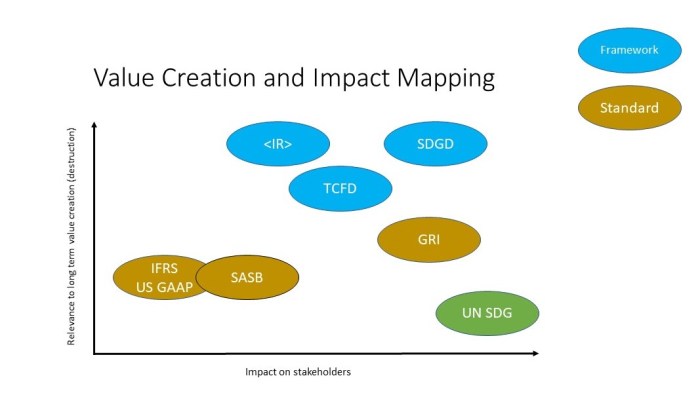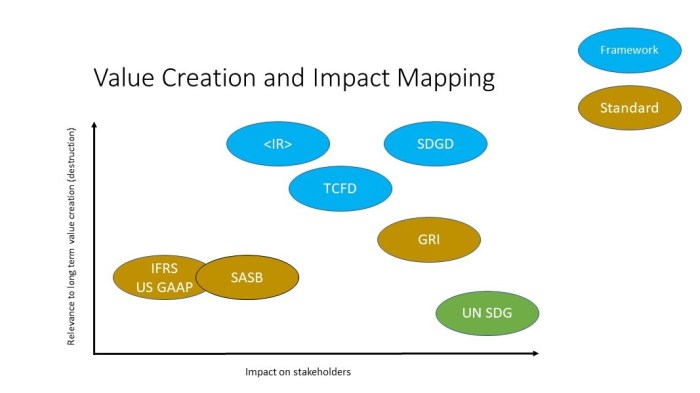Value creation vs revenue extraction is a critical balancing act for any business. This exploration delves into the intricacies of each, examining their distinct methodologies and highlighting the interplay between them. We’ll uncover innovative strategies for maximizing value creation, optimizing revenue extraction, and ultimately achieving sustainable growth.
Understanding the differences between creating value and extracting revenue is fundamental to business success. Value creation focuses on providing solutions that customers genuinely need, while revenue extraction aims to maximize profits from those solutions. This article will explore how these two seemingly disparate approaches can be effectively integrated for long-term profitability.
Defining Value Creation and Revenue Extraction
In today’s competitive business landscape, understanding the difference between value creation and revenue extraction is crucial for sustained success. While often intertwined, these two concepts represent distinct approaches to generating profit and achieving long-term growth. Value creation focuses on building lasting customer relationships and delivering genuine benefits, whereas revenue extraction often prioritizes short-term gains. This difference impacts not only profitability but also brand reputation and customer loyalty.Value creation is about more than just selling a product or service; it’s about building a meaningful relationship with customers.
Revenue extraction, on the other hand, is frequently associated with a more transactional approach, focusing on maximizing immediate income. A deeper understanding of these two approaches can help businesses strategize for sustainable growth.
Value Creation Defined
Value creation in business involves designing and delivering products or services that address a genuine customer need or problem. It’s a proactive approach that anticipates future requirements and strives to exceed expectations. This often includes building a robust customer experience, providing excellent support, and fostering long-term relationships. The core objective is to increase customer lifetime value by offering solutions that improve their lives or businesses.
For instance, a software company might focus on ongoing updates and support to maintain customer satisfaction, rather than just selling a license and moving on.
Revenue Extraction Defined
Revenue extraction, conversely, is often a more short-term, transactional approach. Businesses employing this strategy aim to maximize immediate revenue through various methods such as price increases, upselling, or aggressive sales tactics. The emphasis is on extracting value from existing products or services, rather than building new ones or deepening customer relationships. This approach can lead to short-term gains, but often comes at the expense of customer loyalty and long-term profitability.
Key Differences Between Value Creation and Revenue Extraction
The key difference lies in the fundamental goals and methodologies. Value creation seeks to establish a lasting customer relationship, building value over time, while revenue extraction often prioritizes immediate income without necessarily focusing on future value. This difference is evident in their respective approaches to customer interaction, pricing strategies, and product development.
Overlaps and Interdependencies
While seemingly distinct, value creation and revenue extraction aren’t mutually exclusive. In fact, they can be highly interdependent. For example, a company might invest in value creation (e.g., creating high-quality products) to improve customer satisfaction, which, in turn, can lead to increased revenue (revenue extraction). Conversely, a company might generate revenue through an initial extraction approach, and then use that revenue to invest in further value creation efforts.
Thinking about value creation versus revenue extraction? It’s a constant balancing act, isn’t it? Sometimes, focusing solely on quick revenue extraction can lead to short-sighted decisions, like a poorly executed software update. Take a look at the interesting fix for the Windows 11 recall glitch here. Ultimately, though, true value creation for users and a sustainable business model comes from focusing on creating long-term value, not just extracting immediate revenue.
Finding the right balance between these two approaches is essential for sustainable business success.
Comparison of Value Creation and Revenue Extraction Strategies
| Characteristic | Value Creation | Revenue Extraction |
|---|---|---|
| Goal | Building long-term customer relationships and delivering value. | Maximizing immediate revenue. |
| Methodology | Focus on customer needs, continuous improvement, and long-term solutions. | Aggressive sales tactics, price increases, and upselling. |
| Customer Relationship | Fostering loyalty and trust. | Transactional focus. |
| Product/Service Development | Continuous innovation and adaptation to customer needs. | Leveraging existing products/services with minimal changes. |
| Pricing Strategy | Value-based pricing, considering customer perceived value. | Price optimization for maximum profitability. |
| Long-term Impact | Sustainable growth, increased customer lifetime value. | Potentially unsustainable growth, reduced customer loyalty. |
Value Creation Strategies: Value Creation Vs Revenue Extraction
Value creation is more than just generating revenue; it’s about building lasting relationships with customers by providing genuine value beyond their immediate needs. Successful businesses understand that creating value fosters loyalty, drives repeat business, and ultimately, leads to long-term profitability. This shift from a purely transactional model to one focused on value creation is crucial for thriving in today’s competitive landscape.
Innovative Value Creation Strategies Across Industries
Innovative value creation strategies are not confined to a single industry. They encompass a diverse range of approaches, each tailored to specific customer needs and market contexts. For instance, in the technology sector, companies like Apple have cultivated a culture of continuous innovation, consistently exceeding expectations with sleek designs and user-friendly interfaces. This, in turn, drives customer loyalty and premium pricing.
In contrast, companies in the retail sector often implement value creation strategies by offering personalized recommendations and exclusive experiences.
Identifying Unmet Customer Needs
Understanding customer needs is paramount to developing value-creating solutions. This involves proactive research and analysis, including surveys, focus groups, and customer feedback. Analyzing market trends and competitor offerings helps pinpoint unmet needs and opportunities for improvement. This understanding allows businesses to develop solutions that not only meet existing demands but also anticipate future needs, thus fostering a stronger connection with customers.
The Role of Customer Experience and Relationship Building
Customer experience is intrinsically linked to value creation. A positive and seamless experience across all touchpoints – from initial contact to post-purchase support – fosters customer loyalty and encourages advocacy. Building strong customer relationships involves proactive communication, personalized service, and ongoing engagement. For example, businesses can implement loyalty programs or personalized communication channels to maintain consistent interaction and provide tailored support.
Measuring the Impact of Value Creation Initiatives
Quantifying the impact of value creation initiatives is crucial for demonstrating their effectiveness and justifying future investments. Key performance indicators (KPIs) such as customer retention rates, customer lifetime value (CLTV), and customer satisfaction scores can be used to measure the impact. Analyzing data from these metrics provides insights into the return on investment (ROI) of value creation efforts.
Value Creation Strategies and Their Impact on CLTV
| Value Creation Strategy | Description | Potential Impact on CLTV |
|---|---|---|
| Personalized Recommendations | Tailored product suggestions based on individual customer preferences. | Increased purchase frequency, higher average order value, and stronger customer loyalty. |
| Exclusive Experiences | Offering unique events, workshops, or access to special content. | Elevated customer perception, enhanced brand affinity, and higher willingness to pay a premium. |
| Proactive Customer Support | Addressing customer issues before they escalate and offering personalized solutions. | Reduced churn rate, improved customer satisfaction, and positive word-of-mouth referrals. |
| Community Building | Creating online forums or in-person gatherings to foster engagement among customers. | Increased customer loyalty, improved brand advocacy, and enhanced customer lifetime value. |
| Product Innovation | Developing new and improved products based on customer feedback and market trends. | Higher customer satisfaction, improved brand reputation, and greater customer lifetime value. |
Revenue Extraction Strategies
Revenue extraction, while often viewed as the opposite of value creation, is a crucial component of a sustainable business model. It’s about strategically capturing the value you’ve created, ensuring your company remains profitable and can reinvest in further growth. Effective revenue extraction involves understanding customer needs and behaviors, employing diverse pricing models, and meticulously managing the entire process.
Thinking about value creation versus revenue extraction lately, and it got me wondering about Disney’s latest releases. Is Moana 2 streaming now? Checking out Is Moana 2 Streaming Now? helps to see how different strategies for monetizing content can affect the overall value proposition. Ultimately, creating true value for consumers is key, and it’s more than just extracting revenue.
It’s not about exploiting customers, but about maximizing the return on the value you provide.
Common Revenue Extraction Models
Different businesses adopt various revenue models to capture the value they offer. Understanding these models is crucial for maximizing revenue without compromising customer satisfaction. Choosing the right model depends on the nature of the product or service, target audience, and competitive landscape.
- Subscriptions: This model offers recurring revenue streams, creating predictable income and fostering customer loyalty. Subscription models work well for services with ongoing value, like software, streaming services, or online content platforms. The key to success is providing compelling benefits to justify the recurring payments.
- Freemium: This approach offers a basic version of a product or service for free, while premium features are accessible through a paid subscription. It’s a powerful way to attract a large user base and convert them into paying customers through the added value of premium features.
- Tiered Pricing: This model allows customers to choose from different pricing plans based on the level of service or features they require. This flexibility accommodates varying customer needs and budgets, making it adaptable to different market segments.
Optimizing Revenue Extraction Processes, Value creation vs revenue extraction
Revenue extraction is more than just setting prices. It involves optimizing the entire process to ensure smooth transactions, minimize friction, and maximize the return. Customer satisfaction plays a crucial role here. A positive experience encourages repeat purchases and referrals.
- Streamlining the Checkout Process: A complicated or lengthy checkout process can lead to lost sales. A user-friendly, intuitive checkout experience is vital to enhance the customer journey and facilitate smooth revenue extraction.
- Effective Customer Support: Providing timely and helpful support can address concerns and resolve issues, ultimately increasing customer satisfaction and repeat business. This can also lead to positive word-of-mouth referrals.
- Upselling and Cross-selling: Identifying opportunities to offer complementary products or upgrades during the sales process can significantly boost revenue. This requires understanding customer needs and offering relevant add-ons that improve their experience.
Targeting High-Value Customers
Identifying and targeting high-value customers is essential for maximizing revenue. These customers often represent a significant portion of revenue and can contribute substantially to long-term profitability.
- Customer Segmentation: Divide customers into segments based on factors like purchasing history, engagement level, and demographics. This allows for tailored marketing strategies and targeted promotions that resonate with specific customer needs.
- Data Analysis: Leveraging data analytics tools to identify patterns and trends in customer behavior is crucial for understanding which customers are most likely to generate the highest revenue.
- Personalized Offers: Offering customized promotions and discounts based on individual customer preferences can significantly increase their lifetime value and revenue generation.
Pricing Strategy Comparison
A well-defined pricing strategy is critical to maximizing revenue. Different strategies have varying effects on customer perception and revenue generation.
| Pricing Strategy | Description | Effect on Revenue Generation |
|---|---|---|
| Value-Based Pricing | Pricing based on the perceived value of the product or service to the customer. | Potentially high revenue if value is effectively communicated and justified. |
| Cost-Plus Pricing | Pricing based on the cost of production plus a markup. | Predictable revenue but potentially less competitive if not aligned with market value perception. |
| Competitive Pricing | Pricing based on the pricing of competitors. | Can be effective in capturing market share but requires careful monitoring of competitor strategies. |
Analyzing Pricing Data
Analyzing pricing data is essential for optimizing revenue extraction strategies. This involves understanding the relationship between price points and sales volume.
- Sales Data Analysis: Reviewing sales data across different price points to identify trends in customer response to price changes.
- Market Research: Understanding customer willingness to pay for various product features and configurations is crucial. Market research can offer valuable insights into the price elasticity of demand.
- A/B Testing: Experimenting with different price points to determine which ones generate the most revenue is a crucial aspect of refining pricing strategies.
Value Creation vs. Revenue Extraction in Different Business Models
Balancing value creation and revenue extraction is crucial for sustainable business success. A company focused solely on extracting revenue without providing substantial value risks alienating customers and damaging its long-term prospects. Conversely, prioritizing value creation without generating sufficient revenue can lead to financial instability. This section explores how different business models approach this delicate balance, examining successful examples and the inherent challenges.
Value Creation and Revenue Extraction in SaaS
SaaS businesses typically excel at value creation through ongoing service improvements and feature enhancements. Subscription models provide recurring revenue streams, allowing for consistent income generation. Value is often created through software updates, enhanced user interfaces, and added functionalities. Revenue extraction in SaaS involves optimizing pricing models, strategically increasing subscription tiers, and managing customer churn. Companies like Salesforce and HubSpot demonstrate a strong ability to deliver value and simultaneously extract revenue through well-defined subscription tiers and proactive customer support.
Value Creation and Revenue Extraction in E-commerce
E-commerce companies create value through a wide range of offerings, from diverse product selections to seamless shopping experiences and personalized recommendations. Value creation involves improving logistics, enhancing customer service, and creating a user-friendly online platform. Revenue extraction strategies for e-commerce include effective pricing strategies, targeted advertising campaigns, and promotional offers to maximize sales conversion rates. Companies like Amazon exemplify this balance by offering a vast product catalog, a streamlined shopping experience, and aggressive marketing campaigns, resulting in high revenue generation.
Value Creation and Revenue Extraction in Manufacturing
Value creation in manufacturing often focuses on producing high-quality goods at competitive prices, efficient supply chains, and innovative product designs. Value is further created by incorporating sustainability and ethical practices into production processes. Revenue extraction involves optimizing production costs, effectively managing supply chains, and setting competitive pricing strategies to maximize profitability. Companies like Toyota, known for their lean manufacturing processes and commitment to quality, demonstrate how value creation and revenue extraction are interconnected in the manufacturing sector.
Interconnectedness of Value Creation and Revenue Extraction
Value creation and revenue extraction are intrinsically linked. Effective value creation often leads to higher customer loyalty and willingness to pay, thereby increasing revenue opportunities. Conversely, successful revenue extraction can fund further value creation initiatives, leading to a virtuous cycle of growth and improvement. A strong brand reputation and positive customer experience are crucial in driving both value creation and revenue extraction.
Challenges and Trade-offs
Prioritizing either value creation or revenue extraction can present challenges. A sole focus on revenue extraction might lead to short-term gains but jeopardize long-term customer relationships. Similarly, prioritizing value creation without generating sufficient revenue can strain a company’s financial stability. A strategic balance between these two aspects is essential for sustainable success in any business model.
Comparison of Value Creation and Revenue Extraction Processes
| Business Model | Value Creation | Revenue Extraction |
|---|---|---|
| SaaS | Ongoing service improvements, feature enhancements, proactive customer support | Subscription tiers, pricing models, customer retention strategies |
| E-commerce | Diverse product selection, seamless shopping experience, personalized recommendations, improved logistics, enhanced customer service | Pricing strategies, targeted advertising, promotional offers, sales conversion optimization |
| Manufacturing | High-quality goods, efficient supply chains, innovative product designs, sustainable and ethical practices | Production cost optimization, supply chain management, competitive pricing |
Measuring the Effectiveness of Value Creation and Revenue Extraction

Understanding how well your business creates value for customers and extracts revenue is crucial for sustained growth. Effective measurement allows you to identify areas for improvement and optimize strategies for maximum impact. This involves more than just tracking revenue; it requires a holistic approach that considers the customer experience and the long-term health of the business.Quantifying the return on both value creation and revenue extraction efforts is essential for making data-driven decisions.
By tracking specific metrics, businesses can gain insights into what resonates with their target market, allowing for adjustments and enhancements to offerings and processes. This data-driven approach fosters a culture of continuous improvement, ensuring the business stays relevant and profitable in the long run.
Value Creation Metrics
Understanding how well your products or services meet customer needs is key to sustainable value creation. These metrics allow you to understand customer satisfaction and loyalty, which are fundamental to long-term success.
- Customer Satisfaction (CSAT) Scores: Regularly surveying customers about their satisfaction with products or services provides a direct measure of perceived value. A high CSAT score indicates that customers feel their needs are being met and that your business is providing value. Tracking CSAT over time reveals trends and areas for improvement.
- Net Promoter Score (NPS): This metric measures customer loyalty and willingness to recommend your brand. High NPS scores indicate strong customer loyalty, which translates into repeat business and positive word-of-mouth marketing.
- Customer Lifetime Value (CLTV): This metric estimates the total revenue a customer is expected to generate throughout their relationship with your business. High CLTV signifies that your value proposition resonates strongly with customers and results in sustained revenue.
- Customer Churn Rate: This metric measures the percentage of customers who stop using your products or services within a given period. A low churn rate suggests that your value proposition is effective and customers are satisfied with your offerings.
- Customer Effort Score (CES): This measures how easy it is for customers to interact with your business. A low CES score indicates that your value creation efforts are efficient and minimize customer frustration, leading to increased customer loyalty and repeat business.
Revenue Extraction Metrics
Effective revenue extraction strategies are essential for profitability. These metrics provide insight into how well your business converts value into revenue.
- Average Revenue Per User (ARPU): This metric measures the average revenue generated per customer. It is a key indicator of the success of revenue generation strategies.
- Customer Acquisition Cost (CAC): This measures the cost of acquiring a new customer. Comparing CAC to CLTV is vital; if CAC exceeds CLTV, the revenue extraction strategy is likely unsustainable.
- Conversion Rates: This metric tracks the percentage of potential customers who convert into paying customers. High conversion rates suggest that your revenue extraction strategies are effective in converting leads into sales.
- Average Order Value (AOV): This metric shows the average value of orders placed by customers. Improving AOV through upselling or cross-selling strategies can significantly increase revenue.
- Gross Profit Margin: This shows the percentage of revenue remaining after accounting for the cost of goods sold. A higher gross profit margin signifies efficient revenue extraction strategies.
Value Creation and Customer Loyalty
Customer loyalty is directly linked to the perceived value a business provides.
When customers feel valued, they are more likely to remain loyal to a brand, leading to repeat purchases, positive word-of-mouth referrals, and increased profitability.
Examples of Businesses Using Metrics
Many companies utilize these metrics to refine their strategies. For example, a SaaS company might track CSAT and NPS to ensure their software meets user needs and generates positive feedback. An e-commerce retailer might monitor AOV and conversion rates to optimize their pricing and promotional strategies.
Thinking about value creation versus revenue extraction? It’s a key business consideration, and the recent news on EV purchases, particularly Volkswagen, Chevrolet, and Tesla’s reliance on rebates, like this article highlights , raises interesting questions. Are these companies truly creating value for consumers, or are they simply extracting revenue through temporary incentives? The debate boils down to long-term sustainability and genuine value addition, not just short-term financial gains.
Key Metrics for Evaluating Value Creation and Revenue Extraction Effectiveness
| Metric | Value Creation | Revenue Extraction |
|---|---|---|
| Customer Satisfaction (CSAT) | High scores indicate value proposition is working. | High scores suggest customers are satisfied with the purchase process. |
| Net Promoter Score (NPS) | High scores indicate strong customer loyalty and advocacy. | High scores demonstrate brand loyalty and revenue generation potential. |
| Customer Lifetime Value (CLTV) | High CLTV shows strong value proposition. | High CLTV reflects effective revenue generation strategies. |
| Customer Churn Rate | Low churn indicates value proposition resonates. | Low churn shows revenue stability and customer retention. |
| Customer Effort Score (CES) | Low scores indicate efficient value delivery. | Low scores show smooth revenue generation processes. |
| Average Revenue Per User (ARPU) | – | Indicates effectiveness of revenue generation strategies. |
| Customer Acquisition Cost (CAC) | – | Evaluates the cost-effectiveness of revenue generation. |
| Conversion Rates | – | Highlights effectiveness of revenue conversion. |
| Average Order Value (AOV) | – | Demonstrates revenue generation per transaction. |
| Gross Profit Margin | – | Measures profitability of revenue extraction strategies. |
Case Studies and Examples

Diving deeper into the real world, we can see how businesses are successfully implementing value creation and revenue extraction strategies. This section provides concrete examples, illustrating how these concepts play out in practice, and highlighting companies that have effectively balanced these approaches.Understanding successful implementations of both value creation and revenue extraction is crucial for businesses aiming to maximize profitability and long-term sustainability.
These case studies will show the different ways companies can achieve this balance, revealing how a focus on creating genuine value for customers can also lead to robust revenue streams.
Value Creation Success Stories
Value creation isn’t just about adding features; it’s about understanding and fulfilling customer needs. Companies that excel at this often see significant growth and customer loyalty.
- Netflix: Netflix’s early focus on providing a convenient and diverse streaming experience, beyond simply renting DVDs, exemplified value creation. By offering a vast library of movies and TV shows, along with personalized recommendations, Netflix transformed the entertainment industry, creating a compelling value proposition for subscribers. This focus on user experience and extensive content selection positioned Netflix as a market leader.
- Apple: Apple’s product design and user-friendly interfaces have created a strong brand identity and customer loyalty. Their products are often seen as premium and aesthetically pleasing, providing a level of user experience that many competitors struggle to match. The company has been consistently successful in creating value through design, user interface, and brand recognition.
- Tesla: Tesla’s value creation lies in its commitment to sustainable transportation. By offering electric vehicles with advanced technology and a focus on renewable energy, Tesla has captured a significant portion of the market for environmentally conscious consumers. Their commitment to innovation and sustainability has been a significant driver of value creation.
Revenue Extraction Strategies in Action
While value creation builds customer relationships, effective revenue extraction strategies are equally vital for profitability.
- Subscription Models: Companies like Spotify and Patreon exemplify effective revenue extraction through subscription models. They offer a variety of tiers, each with increasing benefits and features, allowing for tiered pricing and maximizing revenue potential based on the value offered to the subscriber. This model is particularly effective in building recurring revenue streams.
- Premium Pricing: Luxury brands often employ premium pricing strategies to convey exclusivity and high value. The pricing reflects the perceived value of the product or service, making it attractive to customers who value quality and status. This approach effectively extracts revenue from a specific market segment willing to pay a premium.
- Strategic Partnerships: Companies often partner with other businesses to increase market reach and revenue streams. By collaborating with complementary organizations, they can expand their customer base and reach new markets. This approach helps businesses extract revenue from new customer segments.
Balancing Value Creation and Revenue Extraction
Successful businesses understand that value creation and revenue extraction are not mutually exclusive.
- Microsoft: Microsoft demonstrates a strong balance between value creation and revenue extraction. They invest heavily in research and development to create innovative products (value creation), while also employing effective pricing and licensing strategies to generate revenue (revenue extraction). This allows them to maintain a competitive edge and consistent profitability.
Key Takeaways from Case Studies
| Company | Value Creation Strategy | Revenue Extraction Strategy | Key Takeaway |
|---|---|---|---|
| Netflix | Extensive content library, user-friendly interface | Subscription model with tiered pricing | Value creation through user experience leads to robust revenue streams. |
| Apple | Premium product design, intuitive user experience | Premium pricing, strong brand loyalty | Premium design and brand recognition enable higher revenue generation. |
| Tesla | Sustainable transportation, advanced technology | Premium pricing, strategic partnerships | Commitment to sustainability can be a powerful value proposition and revenue driver. |
Challenges and Considerations
Balancing value creation and revenue extraction is a delicate act. Businesses often face conflicting pressures to enhance customer value while simultaneously maximizing profits. Successfully navigating this tension requires careful consideration of potential pitfalls and proactive strategies for mitigation. This section explores the complexities involved, including ethical considerations, market impacts, and risk management.
Potential Challenges in Balancing Value Creation and Revenue Extraction
Maintaining a balance between value creation and revenue extraction is a constant challenge. One common issue is the temptation to prioritize short-term revenue gains over long-term value creation. This can lead to strategies that negatively impact customer relationships, brand reputation, and ultimately, sustainable profitability. Another challenge lies in the difficulty of accurately measuring the value created for customers.
Defining and quantifying intangible benefits, such as improved user experience or enhanced brand loyalty, can be complex and require innovative metrics.
Ethical Considerations Related to Revenue Extraction Strategies
Ethical considerations are paramount in revenue extraction strategies. Strategies that prioritize maximizing profits at the expense of customer well-being or fair treatment raise serious ethical concerns. For instance, deceptive pricing tactics or exploitative subscription models can erode trust and damage a company’s reputation. A focus on transparency and fairness in pricing, product design, and customer service is crucial for long-term success.
Impact of Market Conditions on Value Creation and Revenue Extraction
Market conditions significantly influence the balance between value creation and revenue extraction. Economic downturns, for example, can force businesses to prioritize revenue extraction to maintain profitability. Conversely, periods of rapid growth may allow for increased investment in value creation initiatives, such as product innovation and customer service enhancements. Companies must adapt their strategies to the prevailing market conditions to ensure sustainable success.
Strategies for Mitigating Potential Risks and Obstacles
Risk mitigation is crucial for both value creation and revenue extraction. To mitigate risks in value creation, businesses should invest in market research and customer feedback mechanisms to ensure alignment between offerings and customer needs. Implementing agile development processes allows for rapid adaptation to changing market demands. In revenue extraction, companies can use data analytics to optimize pricing strategies, improve operational efficiency, and identify potential revenue leakage.
Table of Potential Challenges and Solutions
| Challenge | Potential Solution |
|---|---|
| Prioritizing short-term revenue over long-term value creation | Implement a balanced scorecard approach that considers both financial and non-financial metrics. |
| Difficulty measuring customer value creation | Develop innovative metrics that capture intangible benefits, such as customer satisfaction surveys and net promoter scores. |
| Ethical concerns regarding revenue extraction strategies | Establish clear ethical guidelines and transparent pricing policies. Prioritize customer well-being and fairness. |
| Impact of market conditions | Develop flexible strategies that can adapt to changing market conditions. Diversify revenue streams and create contingency plans. |
| Risk in value creation | Invest in market research, customer feedback, and agile development processes to ensure alignment with customer needs. |
| Risk in revenue extraction | Use data analytics to optimize pricing, improve operational efficiency, and identify potential revenue leakage. |
Summary
In conclusion, value creation and revenue extraction are intrinsically linked. A successful business strategy understands the delicate balance between these two elements. From identifying unmet needs to optimizing pricing strategies, businesses must prioritize both to achieve lasting success. Ultimately, thriving in today’s market requires a comprehensive understanding of how to foster customer value while effectively generating revenue.






